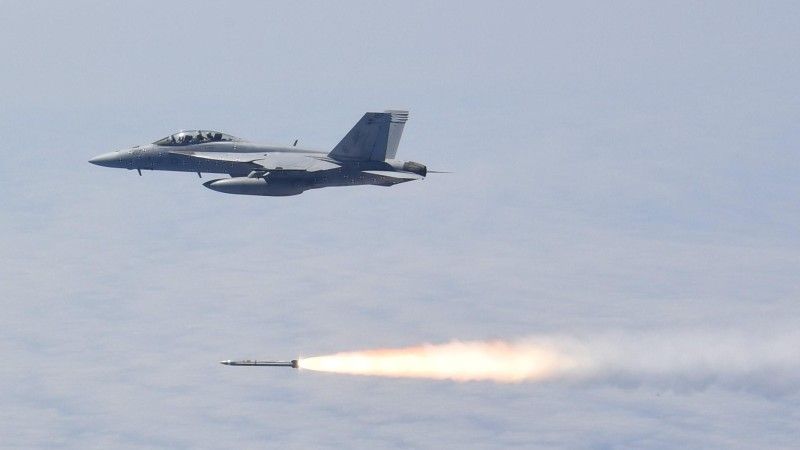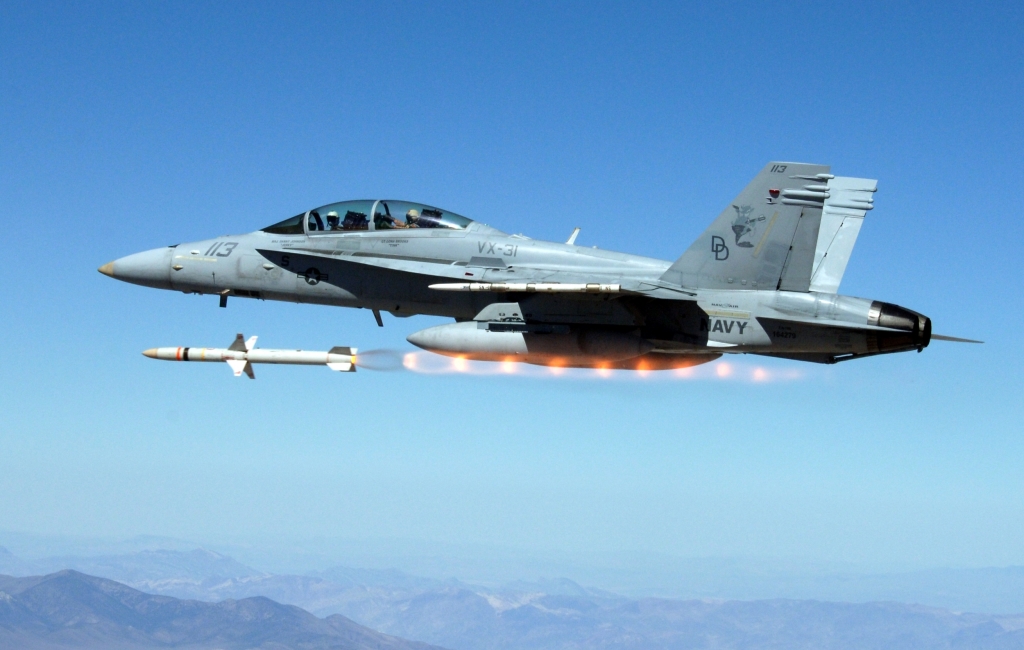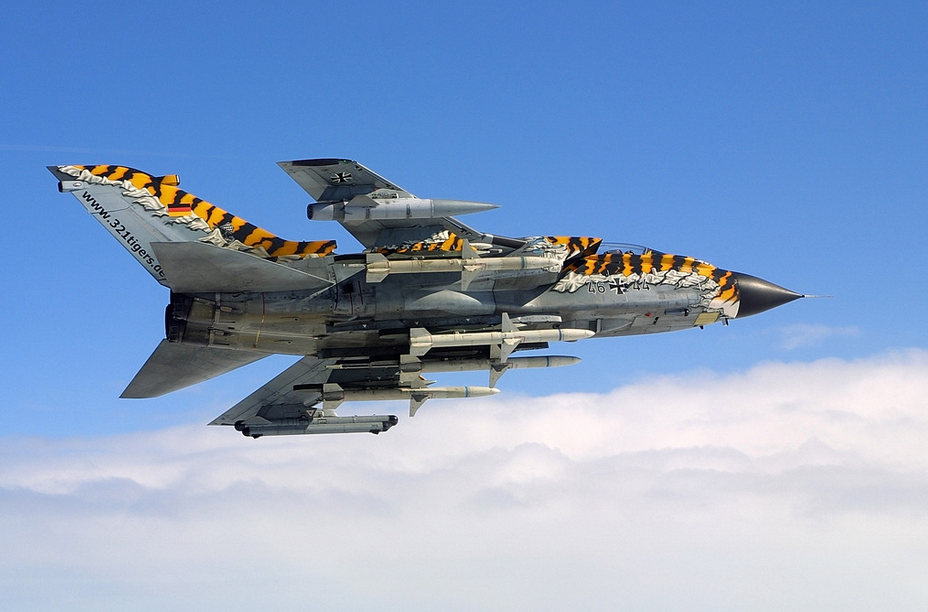Armed Forces
AARGM-ER – New Generation Anti-Radiation Missiles in Production [ANALYSIS]

AARGM-ER Anti-Radiation Missile Program has reached its next phase. Commencing of the serial production opens the way for their introduction into the armament stocks of Super Hornet, Growler and F-35 fighter jets. The last ones will be able to engage critical targets from the long distance, even those that are not radar stations.
The US Navy received – in August this year – an approval for commencing serial production of AARM-ER anti-radiation missile. They will become a part of armament of F18-E/F Super Hornet fighter jets and E/A-18 Growler Electronic Warfare jets. Also F-35, the 5th generation fighter jets in all three versions: F-35A (Air Force), F-35B (Marine Corps) and F-35C (Navy) will be armed with AARGM-ER.
Northrop Grumman received the production order one month later. The first production batch regards 16 combat missiles, 6 CATMs (Captive Air Training Missiles), 4 sets of programming equipment as well as spare parts and support equipment. Production is to be completed by March 2024.
AGM-88G AARGM-ER development program has been lasting for relatively short time US Navy and Northrop Grumman, as the industrial partner, jointly begun it in 2016. AARGM-ER program presumed design of the anti-radiation missile with speed and range significantly exceeding parameters of AGM-88E AARGM missile, being in full scale production since 2012.
It has been decided that new missile will be equipped with guidance system which was designed for AARGM, consisting of digital passive radar emission detector, active millimeter wave radar and combination of INS/GPS system. Elements of missile’s flight control system have been utilized as well.
The new elements in AARGM-ER are: new airframe with leading – edge extension and thermal protection, solid propellant rocket engine and flight control elements placed in its tail. All these, together with possibility to carry missiles inside weapon bays of 5th generation fighter jets, allow to reach twice a speed of AGM-88E which speed – according to NAVAIR public release – exceeds Ma2. Connection with missile’s double range results with significant increase its combat capability.
AARGM-ER preserves all capabilities implemented in missile’s previous version. It can engage radars, even inactive and on the move (thanks to navigation system and millimeter wave radar). It can also engage targets other than radars, when their positions are known.
It is also possible to define Missile Engagement Zones and/or zones, where engaging of targets is prohibited. Last, but not least all information acquired by sensors of AARGM (and AARGM-ER as well) can be utilized by pilot in the cockpit as well as forwarded further (for example through Link-16), what expands capability to detect and identify threats from potential enemy’s radar systems.
It has currently been planned that in parallel to the low rate production next developmental tests will be carried on for next 1,5 year and be followed by operational tests. Initial operational readiness is planned to be reached in September 2023.
It is worth to underline that quick transition from AARGM-ER’s concept development to its serial production was mainly possible thanks to the decision about application of existing components and technologies which have been developed in terms of AARGM program. It allows to conclude that AARGM-ER constitutes another step in evolution of anti-radiation weapon system and complements AARGM program.
AARGM missiles in AGM-88E configuration were developed through conversion of older HARM missiles and adding of new detection, navigation and control systems to existing airframes, warheads and propulsion. In turn, AGM-88G introduces the new airframe’s design and utilizes already existing, previously developed electronic systems.

This new version also extends use of AARGM system by US Armed Forces. Although US Navy manages AARGM-ER program, it has been decided that missile will not only be integrated with Super Hornet and Growler fighter jets, but also with all three versions of F-35, used by three branches of US Armed Forces. The F-35A used by USAF and F-35C used by the US Navy will be able to carry weapons inside and outside (under wings). The short takeoff and landing (STOL) F-35B, used by US Marine Corps will carry missiles under wings only.
Czytaj też: AARGM-ER – A Joint, Anti-Radiation Defence
Thus AARGM-ER will become an important tool for F-35 fighter jets to defeat elements of Anti-Access / Area Denial (A2/AD). This high-speed missile will be capable to engage quickly targets which are placed at long distances, with sustaining stealth attributes by JSF A and C versions. This is particularly important in F-35 case, due to the fact that internal weapon bays capacity (dimensions) prevent from placing inside all kinds of air – to – ground weapon systems, so that they can be carried only on under wings pylons, what increases cross section of fighter, thus makes them easier to detect by enemy’s radars.
The “conventional” AARGM missile program in AGM-88E version has still been ongoing, In August this year Northrop Grumman received contract for the tenth production batch of this missile. For the amount of slightly exceeding USD 94,8 million 127 AGM-88E AARGM missiles will be produced, through modernization of existing HARM missiles. In that number, 87 missiles will go to US Navy and 40 to Germany, being the export customer of these missiles. Completion of delivery is expected in 2024.
Germany signed the governmental contract (LOA) for delivery of 91 missiles in total. They will be used on ECR Tornado fighter jets, the same which previously used HARM missiles. In turn, Italian Air Force has been using these missiles from 2018. Australia is another user of AGM-88E AARGM. They are used on F/A-18 Hornet, Super Hornet, also on Growlers.

AARGM missiles have been constantly modified to ensure they are capable to neutralize newly appearing threats. As a matter of fact, in case of anti – radiation weapon system, it has always been permanent process, taking into consideration evolution of air defense systems to be defeated. This is why AARGM’s software modifications will be continued for long time, after introduction of the newer version AARGM-ER. AARGM’s digital architecture facilitates implementation of necessary modifications.
Northrop Grumman plans to continue production of AGM-88E AARGM until at least 2025. Sustainment efforts will continue long after for the already delivered AARGM assets. The modernization package for its sensors is planned in 2022. It is worth to pay attention to the fact that AARGM and AARGM-ER guidance systems are very much alike. So, pilots previously trained in use AGM-88E will be able to transit quickly into the new system. What’s more, enemy’s air defense threat data bases, prepared for AARGM, would be used for AARGM-ER as well.
AARGM as well as AARGM-ER missiles will certainly be developed further. Adaptation to firing them from ground based launchers is one of possible directions. It is the way to increase number of missiles available for engaging targets detected by air or other reconnaissance assets. Missiles integration with IBCS battle management system, being currently developed for US Army, constitutes another direction. In such case, using them alongside with other offensive system such as HIMARS, can also be anticipated.
AARGM and Poland
The decision, regarding low-rate initial production (LRIP) potentially brings closer sharing AARG-ER missiles with export customers. During the last Navy League Conference, it was informed that AARGM-ER’s foreign sales policy has currently been under review. FMS standard way of processing presumes that equipment can be made available for foreign customers after commencing its full rate production (FRP). However, deviation from that rule is possible under so called the Yockey Waiver procedure. This is how Poland has acquired IBCS system for Air Defense “Wisła” program.
According to information Defence24 earlier received from Armed Forces General Staff and Ministry of Defense, acquisition of AARGM missiles has been included into both Technical Modernization Plan (TMP) for 2017 – 2026 and TMP 2021 – 2035. As early as 2018 Poland submitted request for information on price and availability of AARGM and AARGM-ER. Received response regarded only AGM-88E AARGM missile, due to the fact that ER version still remained in the development stage.
Procurement of AGM-88E AARGM version for F-16s and newer AARGM-ER for F-35As when they become available seems to be possible solution. Polish F-35As are to achieve initial operational readiness in 2028. Earlier introduction of anti-radiation capabilities which Poland does not possess at all, would facilitate training, preparation of operational doctrine as well as tactics, and will result with possibility to apply full scope AARGM-ERs capabilities when they become available.
Possible introduction of AARGM for F-16 will enable completion of threat data base, basing also on EW reconnaissance flights alongside Polish borders with Russian’s Kaliningrad District and Belarus, in the range of potential adversary’s anti-access weapon systems. In case the appropriate accord is concluded, such database would also be available to allies present at the eastern flank, USA in that number.
AARGM, the anti-radiation missile program is an example of gradual building of capabilities needed on contemporary battlefield. During its first phase attention focused on electronic systems, utilizing available airframe and missile’s propulsion. Through the second phase previously acquired experience and results were utilized and settled in the new airframe and propulsion, what allow to increase significantly speed and range and adapt to use on 5th generation fighter jets, while securing their traits. Thus AARGM is becoming one of US Armed Forces truly essential armament systems, now integrated not only with Hornets, Super Hornets and Growlers, but also F-35 fighter jets. Beginning of the serial production constitutes the turning point on the way to missile’s implementation into the service.
An article prepared in cooperation with Northrop Grumman
